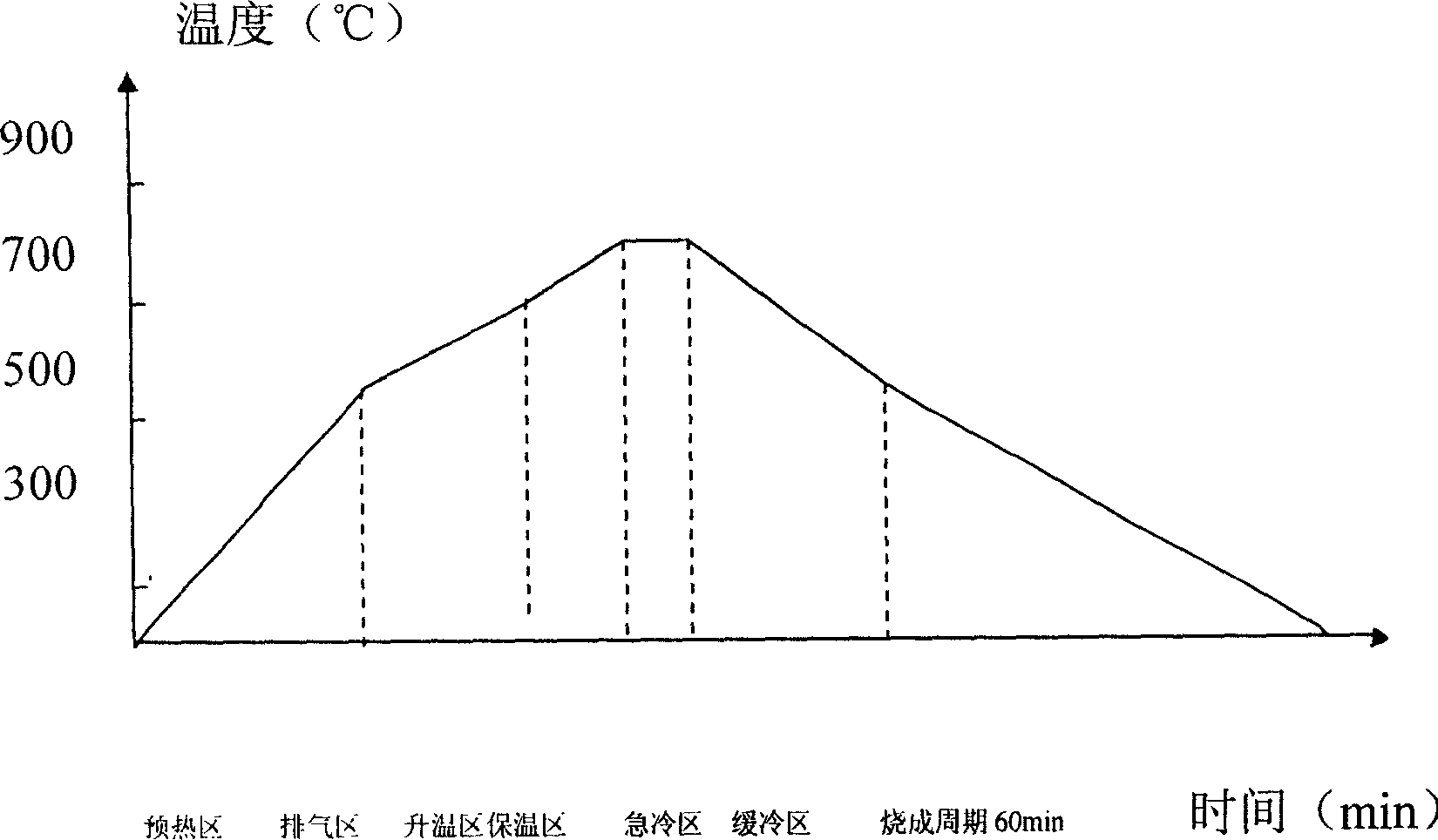Method of producing archaistic brick by low-temperature sintering
A low-temperature sintering, antique brick technology, applied in the field of antique brick technology, can solve problems such as incapacity, save processing costs, improve urban environment, and achieve significant social benefits.
- Summary
- Abstract
- Description
- Claims
- Application Information
AI Technical Summary
Problems solved by technology
Method used
Image
Examples
Embodiment 1
[0025] The production method comprises the following steps:
[0026] 1) Billet formula:
[0027]According to the existing equipment process layout, combined with the actual situation of raw material distribution in this area, through the comparative test and analysis of different raw materials, it is finally determined that waste glass, boiled bauxite, white mud, bentonite, pigment and sodium tripolyphosphate are the main raw materials . The amount of raw materials used for various blanks is shown in Table 1, and the chemical composition analysis of the blanks is shown in Table 2.
[0028] waste glass
cooked bauxite
white clay
sodium tripolyphosphate
colorant
50%
20%
18%
4%
5%
3%
[0029] chemical composition
al 2 o 3
SiO 2
Fe 2 o 3
CaO
MgO
KNaO
other
Content (%)
56
24
1
7
1.0
8
3
[003...
PUM
| Property | Measurement | Unit |
|---|---|---|
| compressive strength | aaaaa | aaaaa |
| flexural strength | aaaaa | aaaaa |
| density | aaaaa | aaaaa |
Abstract
Description
Claims
Application Information
 Login to View More
Login to View More - R&D
- Intellectual Property
- Life Sciences
- Materials
- Tech Scout
- Unparalleled Data Quality
- Higher Quality Content
- 60% Fewer Hallucinations
Browse by: Latest US Patents, China's latest patents, Technical Efficacy Thesaurus, Application Domain, Technology Topic, Popular Technical Reports.
© 2025 PatSnap. All rights reserved.Legal|Privacy policy|Modern Slavery Act Transparency Statement|Sitemap|About US| Contact US: help@patsnap.com


